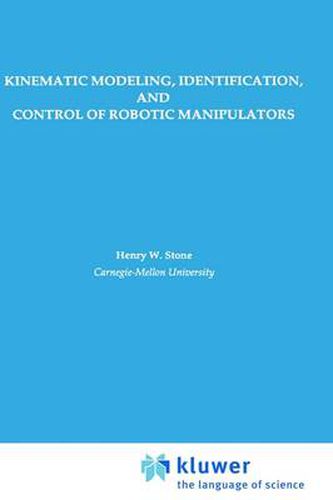Readings Newsletter
Become a Readings Member to make your shopping experience even easier.
Sign in or sign up for free!
You’re not far away from qualifying for FREE standard shipping within Australia
You’ve qualified for FREE standard shipping within Australia
The cart is loading…






This title is printed to order. This book may have been self-published. If so, we cannot guarantee the quality of the content. In the main most books will have gone through the editing process however some may not. We therefore suggest that you be aware of this before ordering this book. If in doubt check either the author or publisher’s details as we are unable to accept any returns unless they are faulty. Please contact us if you have any questions.
The objective of this dissertation is to advance the state-of-the-art in the kinematic modeling, identification, and control of robotic manipulators with rigid links in an effort to improve robot kinematic performance. The positioning accuracy of commercially-available industrial robotic manipulators depends upon a kinematic model which describes the robot geometry in a parametric form. Manufacturing error in the machining and assembly of manipulators lead to discrepancies between the design parameters and the physical structure. Improving the kinematic perfor mance thus requires the identification of the actual kinematic parameters of each individual robot. The identified kinematic parameters are referred to as the arm signature. Existing robot kinematic models, such as the Denavit-Hartenberg model, are not directly applicable to kinematic parameter identification. In this dissertation we introduce a new kinematic model, called the 5-Model, which is applicable to kinematic parameter identification, and use it as the foundation for our development of a general technique for identifying the kinematic parameters of any robot with rigid links.
$9.00 standard shipping within Australia
FREE standard shipping within Australia for orders over $100.00
Express & International shipping calculated at checkout
This title is printed to order. This book may have been self-published. If so, we cannot guarantee the quality of the content. In the main most books will have gone through the editing process however some may not. We therefore suggest that you be aware of this before ordering this book. If in doubt check either the author or publisher’s details as we are unable to accept any returns unless they are faulty. Please contact us if you have any questions.
The objective of this dissertation is to advance the state-of-the-art in the kinematic modeling, identification, and control of robotic manipulators with rigid links in an effort to improve robot kinematic performance. The positioning accuracy of commercially-available industrial robotic manipulators depends upon a kinematic model which describes the robot geometry in a parametric form. Manufacturing error in the machining and assembly of manipulators lead to discrepancies between the design parameters and the physical structure. Improving the kinematic perfor mance thus requires the identification of the actual kinematic parameters of each individual robot. The identified kinematic parameters are referred to as the arm signature. Existing robot kinematic models, such as the Denavit-Hartenberg model, are not directly applicable to kinematic parameter identification. In this dissertation we introduce a new kinematic model, called the 5-Model, which is applicable to kinematic parameter identification, and use it as the foundation for our development of a general technique for identifying the kinematic parameters of any robot with rigid links.